
The A’s formally announced newly signed right-hander Shintaro Fujinami at a press conference last week, where general manager David Forst confirmed that Fujinami is indeed viewed as a starting pitcher.
That’s the role he’s held in Japan’s Nippon Professional Baseball for the bulk of his career, so perhaps it’s not a surprise, but Fujinami is a hard-throwing righty with command issues, so there was a case to be made for putting him in the ’pen.
Beyond that, the simple fact is that even prior to signing Fujinami, the A’s had more rotation candidates than rotation spots. That’s not an especially common spot for a rebuilding club to find itself, but Oakland has zeroed in on bulk pitching acquisition over the course of its fire sale/teardown.
The front office didn’t target exclusively pitchers, but the A’s nonetheless have as many as seven rotation candidates who’ve been acquired via trade within the past calendar year on the 40-man roster.
No team is going to rely on five starters to get through a season, and even getting through a year with “only” seven or eight starters is a luxury to which most teams cannot lay claim in the modern baseball landscape.
That said, the A’s stand out as a team that might lean on 15 or more starting pitchers to get through the season, given the lack of established talent, the glut of nearly MLB-ready arms on the roster and the potential for an in-season trade involving just about any likely member of the rotation.
Let’s take a look at what the starting staff might look like…
The locks
Cole Irvin, LHP: Not many trades that end up sending cash back to a player’s former team work out better than the acquisition of Irvin has for the A’s.
It’s been nearly two years to the day since Oakland picked him up from the Phillies in exchange for cash, and he’s made 62 starts of 4.11 ERA ball with a well below-average 16.8% strikeout rate but a superb 5.2% walk rate.
With four years of club control remaining, it’d be a surprise if Irvin hasn’t at least generated some cursory trade interest this winter, although his glaring home/road splits might not help his cause much.
Dating back to Opening Day 2021, the lefty owns a 3.44 ERA at home, where opponents have batted just .243/.288/.355 against him in nearly 800 plate appearances.
In that same timeframe, Irvin’s road ERA is a more alarming 4.88, and opponents have pounced on him for a .285/.330/.491 slash.
Splits notwithstanding, Irvin is a perfectly viable fourth/fifth starter, but a team that plays its home games in a more hitter-friendly environment might be understandably dissuaded from giving up too much young talent to acquire him.
That’s fine for the A’s for now, given Irvin’s remaining club control and the simple fact that they’ll need some dependability on the staff. If he’s pitching well come July, he’ll be a feasible trade candidate (particularly with an arbitration raise looming next offseason).
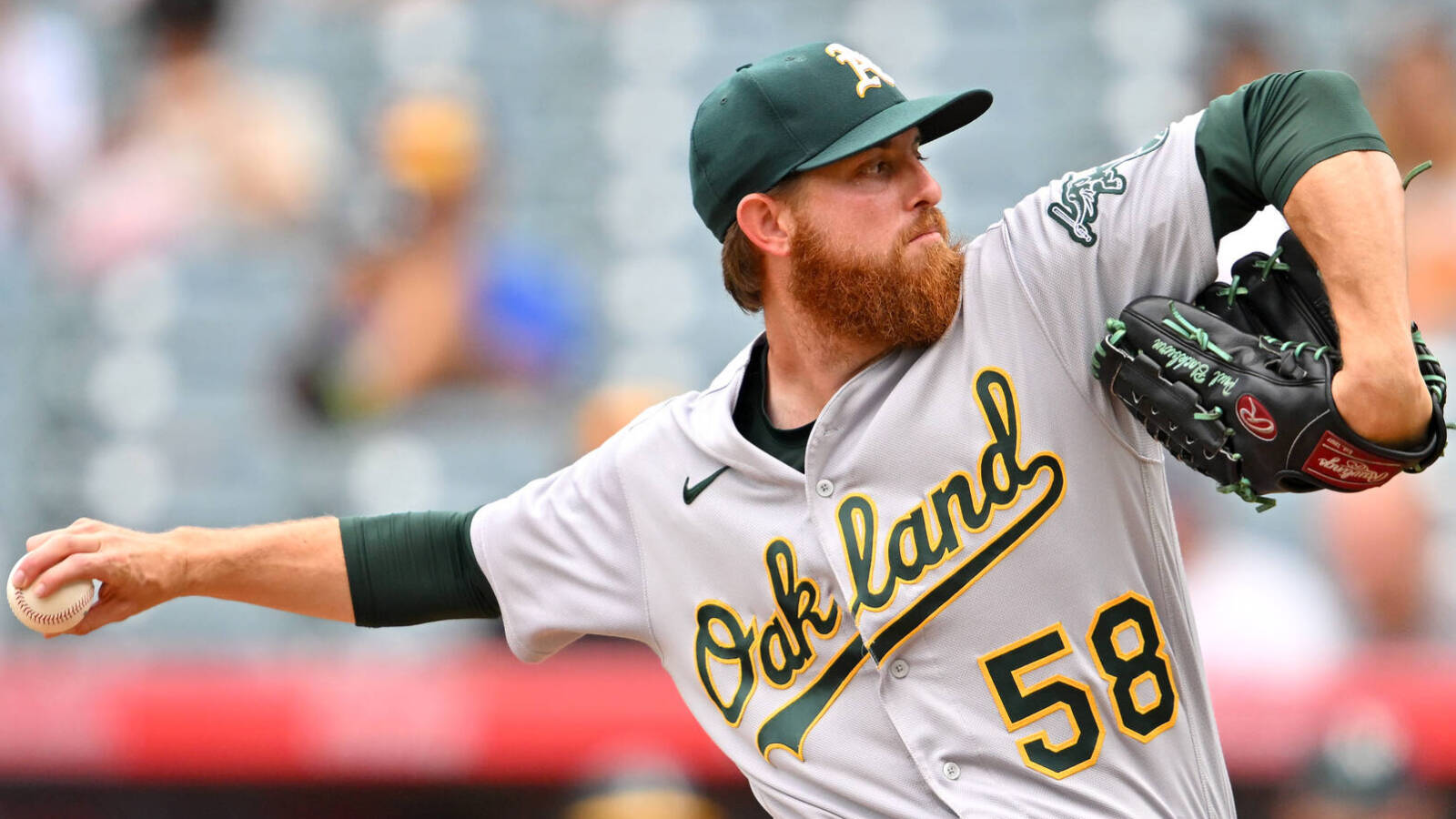
Paul Blackburn, RHP: It’s easy to call Blackburn, who made the 2022 All-Star team but finished the year with a 4.28 ERA, a token All-Star who was only chosen because every team needs a representative.
Perhaps there’s some truth to that, too, but as I noted last summer, Blackburn was a plenty deserving selection and a fairly intriguing trade chip at one point.
Through July 2, he’d pitched 87 innings of 2.90 ERA ball with three times as many strikeouts as walks (18.8% to 6.2%) and a strong 48.7% grounder rate.
His .280 BABIP and 80.7% left-on-base rate pointed to some likely regression, but based on results alone, Blackburn was pretty good.
Things went off the rails almost immediately thereafter, however. Blackburn tried for several weeks to pitch through pain that’d arisen in his pitching hand, but he was shelled for 21 runs in a span of 14 1/3 innings.
He eventually landed on the injured list due to that pain, and testing revealed that he’d torn the tendon sheath in his right middle finger. He was placed in a splint for up to eight weeks, and his season was over.
Time will tell whether Blackburn can replicate his production from the first three months of the 2022 season, but as long as he’s healthy, he’ll be given every opportunity to prove it was sustainable.
Blackburn only has three seasons of club control remaining, so if he’s healthy and pitching well this summer, expect to hear his name pop up in rumors.
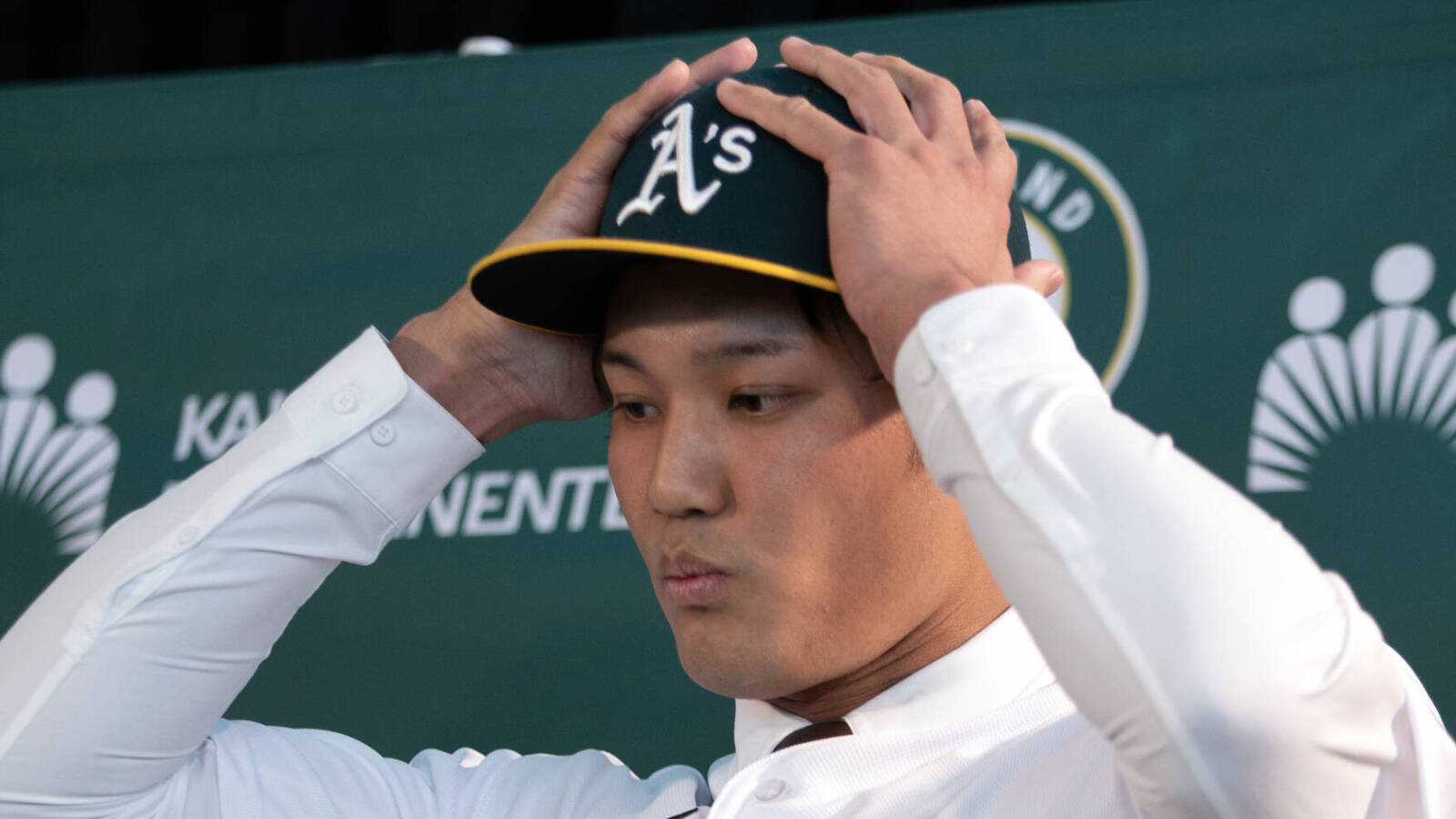
Newcomers who’ll be given a chance
Shintaro Fujinami, RHP: The former high school rival of Shohei Ohtani, Fujinami was once lauded as a prospect nearly as much as the current Angels phenom.
Fujinami, 28, stepped right from his high school rotation into the rotation of Japan’s Hanshin Tigers, posting a 2.75 ERA in 137 2/3 innings as a rookie in Nippon Professional Baseball.
He was a multi-time All-Star and budding phenom in his first four years in Japan, pitching to a sub-3.00 ERA each season.
His career has come off the rails since that time, though, and Fujinami comes to Oakland as a hard-throwing but command-challenged project.
At 6-foot-6, he’s armed with a fastball that can reach triple digits and a splitter and slider that have both, at times, made hitters look silly.
He’s also been shuttled between the Tigers’ top team and minor league team in NPB for several seasons while displaying troubling walk rates and looking like a shell of the potential star he was early in his pro career.
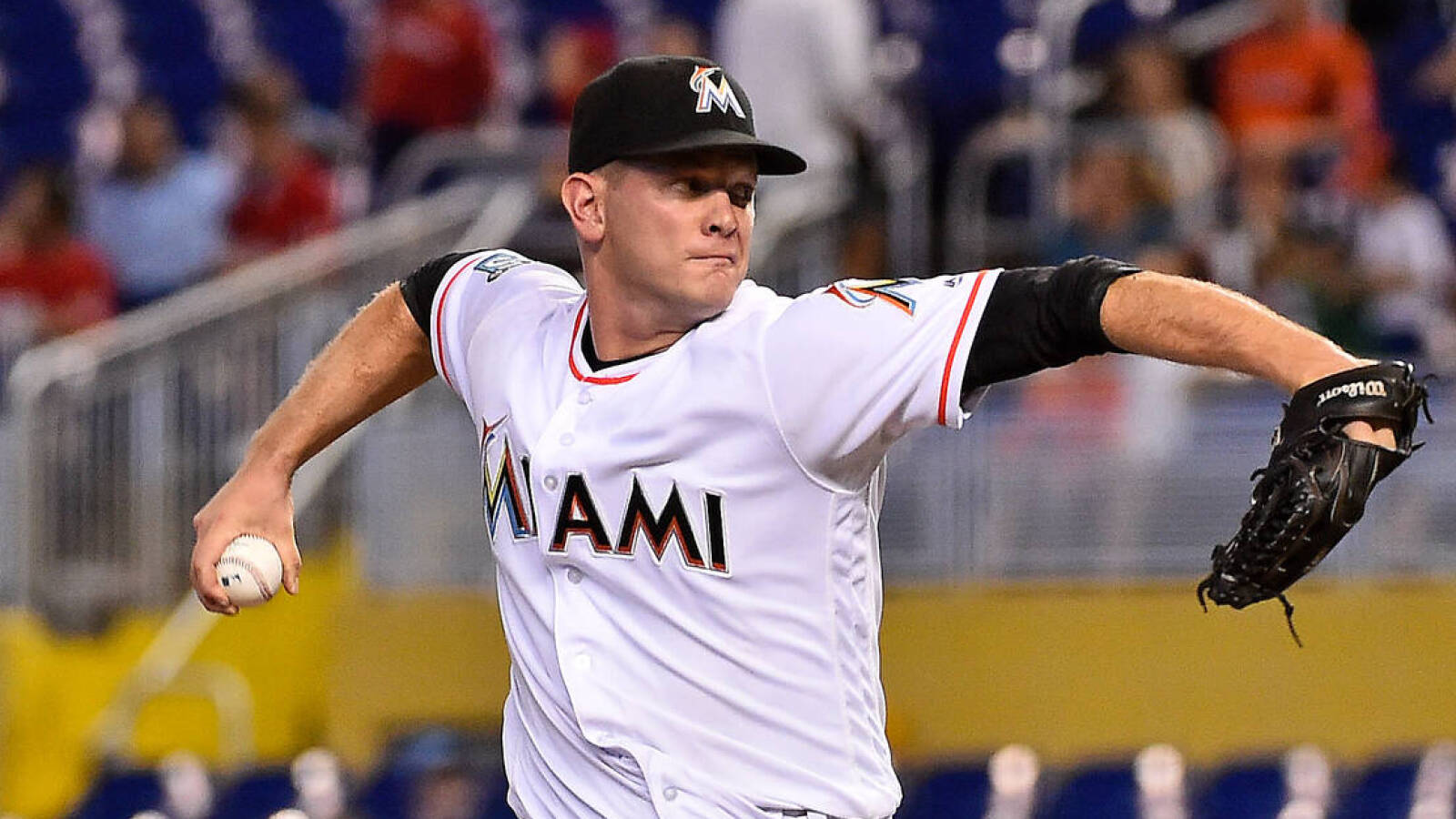
Drew Rucinski, RHP: In the past five years, the now-34-year-old Rucinski went from nondescript, replacement-level MLB pitcher to a powerhouse workhorse for the KBO’s NC Dinos.
Rucinski started 121 games dating back to 2019 and has posted an ERA between 3.17 and 2.93 each season. Along the way, he’s whiffed 21.5% of opposing batters, walked just 6.3% of them and posted a superhuman 66% ground-ball rate.
The A’s signed Rucinski for a year and $3M, with a 2024 club option valued at $5M. If he can carry over any of that KBO form to the Coliseum, he’ll be a durable source of innings and a nice summer trade chip.
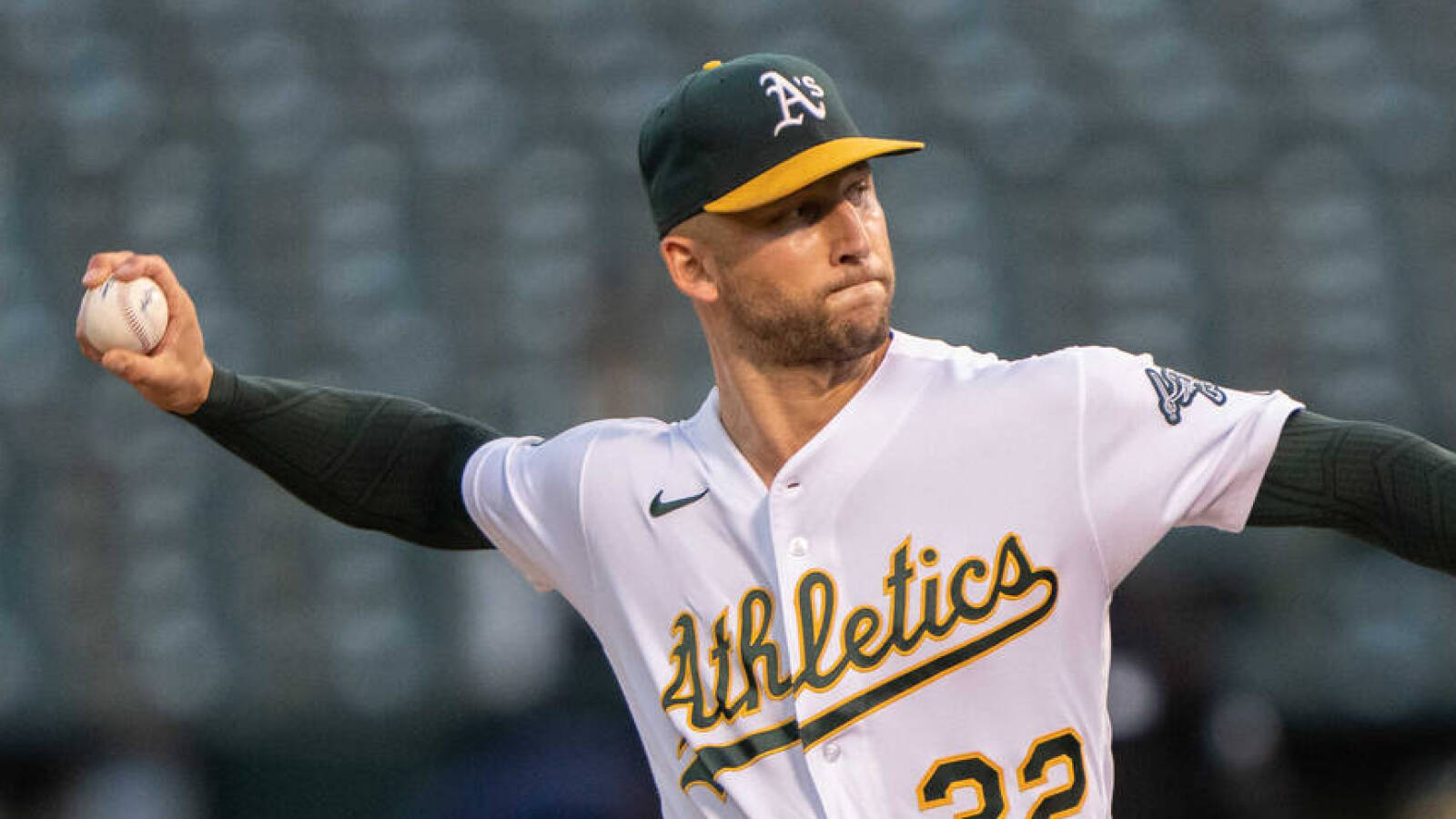
The out-of-options arm who’ll make the staff in some capacity
James Kaprielian, RHP: A former first-round pick of the Yankees who was sent to Oakland as part of the Sonny Gray trade, Kaprielian has been injured more often than he’s been healthy.
He looked to be turning a corner over the past two seasons, logging a combined 4.16 ERA in 253 1/3 innings over the life of 50 games (47 of them starts). However, Kaprielian had shoulder surgery this offseason, and it’s not clear whether he’ll be ready to go for Opening Day.
Manager Mark Kotsay said at the time of Kaprielian’s surgery that the organization expected him to be ready, but Shayna Rubin of the San Jose Mercury News recently suggested that the soon-to-be 29-year-old might miss time early in the year. (If that’s indeed the case, he’ll land on the IL alongside rotation hopeful Daulton Jefferies, who’ll miss all of 2023 after undergoing both thoracic outlet surgery and Tommy John surgery.)
Kaprielian is out of minor league options, so whenever he’s healthy, he’ll be on the roster either as a starter or perhaps a multi-inning reliever — it’s a just a matter of when that time will be.
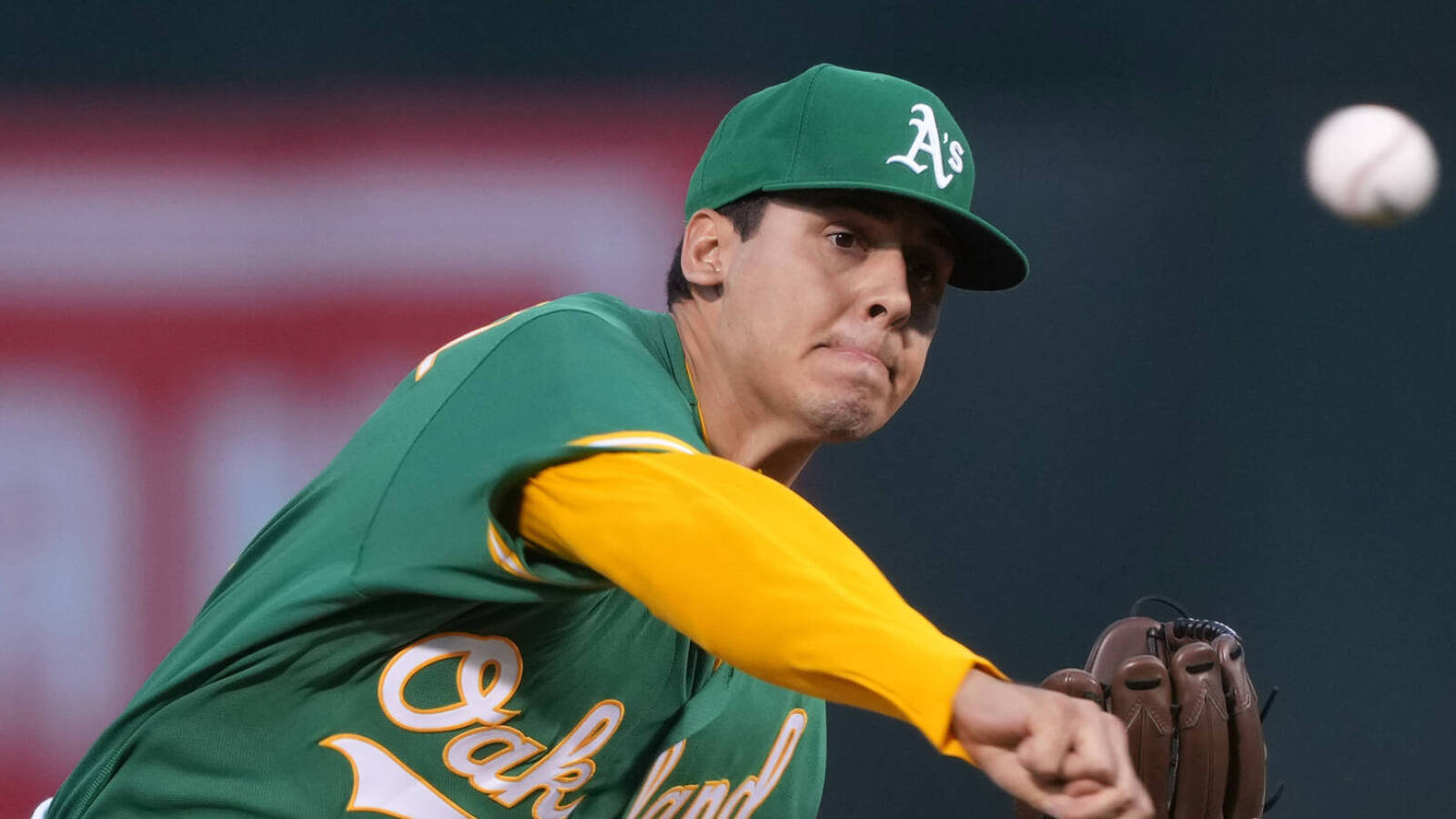
Candidates for the remaining rotation innings
(Note: all players in this section have six-plus seasons of club control remaining)
Adrian Martinez, RHP (two remaining option years): One of two players acquired in the trade that sent Sean Manaea to San Diego, Martinez was roughed up for a 6.24 ERA in 57 2/3 innings in last year’s MLB debut.
It’s a rough showing, to be sure, but his 20.5% strikeout rate and 7.3% walk rate both portend better production. Martinez’s 2.03 HR/9 mark was one of the highest in the game, and only four of the 344 pitchers who threw at least 50 innings in 2022 saw a larger percentage of their fly-balls become home runs than Martinez’s 19.7%.
That HR/FB rate, in particular, is ripe for positive regression, even before considering the A’s spacious home park. Metrics like xFIP (4.11) and SIERA (4.16), which normalize HR/FB to league-average levels, feel that Martinez was vastly better than his basic earned run average.
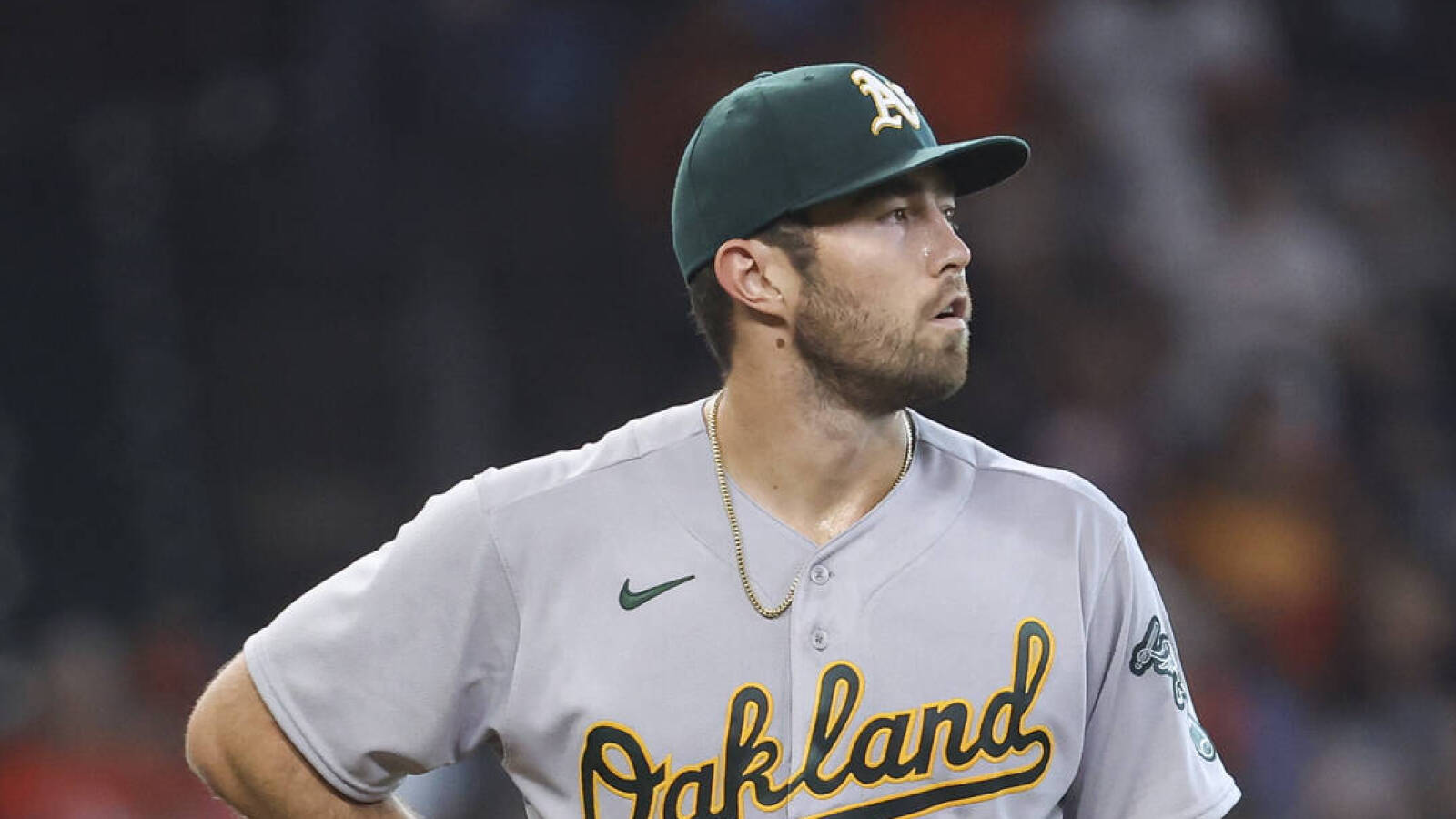
Ken Waldichuk, LHP (three option years): A key piece in the trade sending Frankie Montas to the Bronx, Waldichuk held his own in a seven-start debut (4.93 ERA, 33-to-10 K/BB ratio in 34 2/3 innings).
His final outing, featuring seven shutout frames against the Angels, was a particularly high note on which to finish. On top of those 34 2/3 MLB frames, Waldichuk logged 95 innings of 2.84 ERA ball between Double-A and Triple-A.
He’s arguably the most highly regarded member of this bunch, and he should have multiple opportunities to win a rotation spot over the next 12-to-18 months in Oakland.
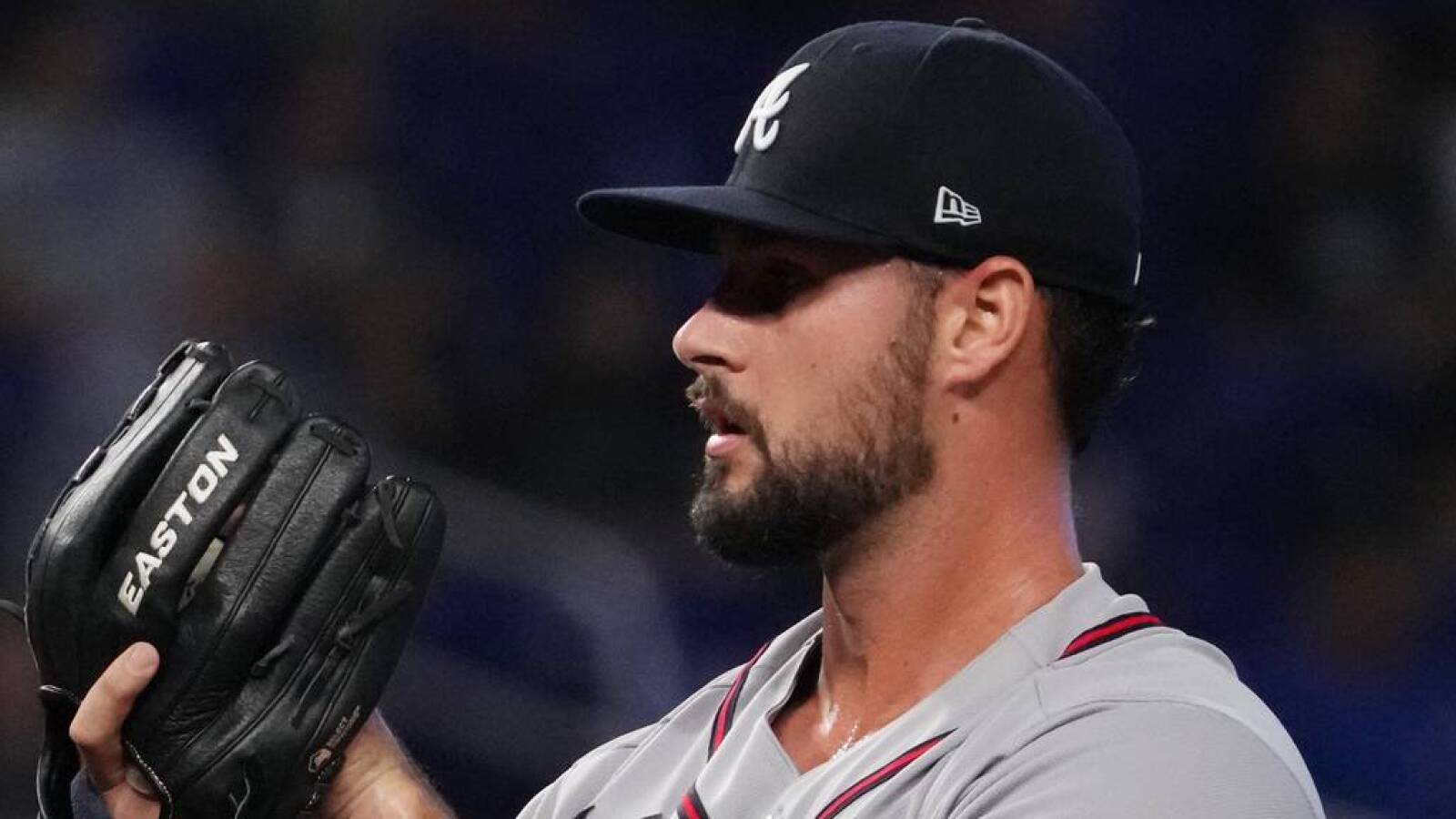
Kyle Muller, LHP (one option year): A 2016 second-round pick by the Braves (who traded him to Oakland in the Sean Murphy deal), Muller has at times been ranked among the sport’s 100 best prospects at various outlets, but his stock has dimmed a bit since that time.
He’s managed just a 5.14 ERA in 49 MLB innings, but he spent the bulk of his 2022 season pitching to a 3.41 ERA in 134 1/3 Triple-A innings (23 starts).
Muller punched out a hefty 29.3% of his opponents. Muller can reach the upper 90s with his heater, draws plus grades on his slider and now that he’s out of a more crowded rotation mix in Atlanta, should have a clear path to innings with the A’s.
He’s out of options after the 2023 season, so it’s in Oakland’s best interest to give him a chance sooner than later.
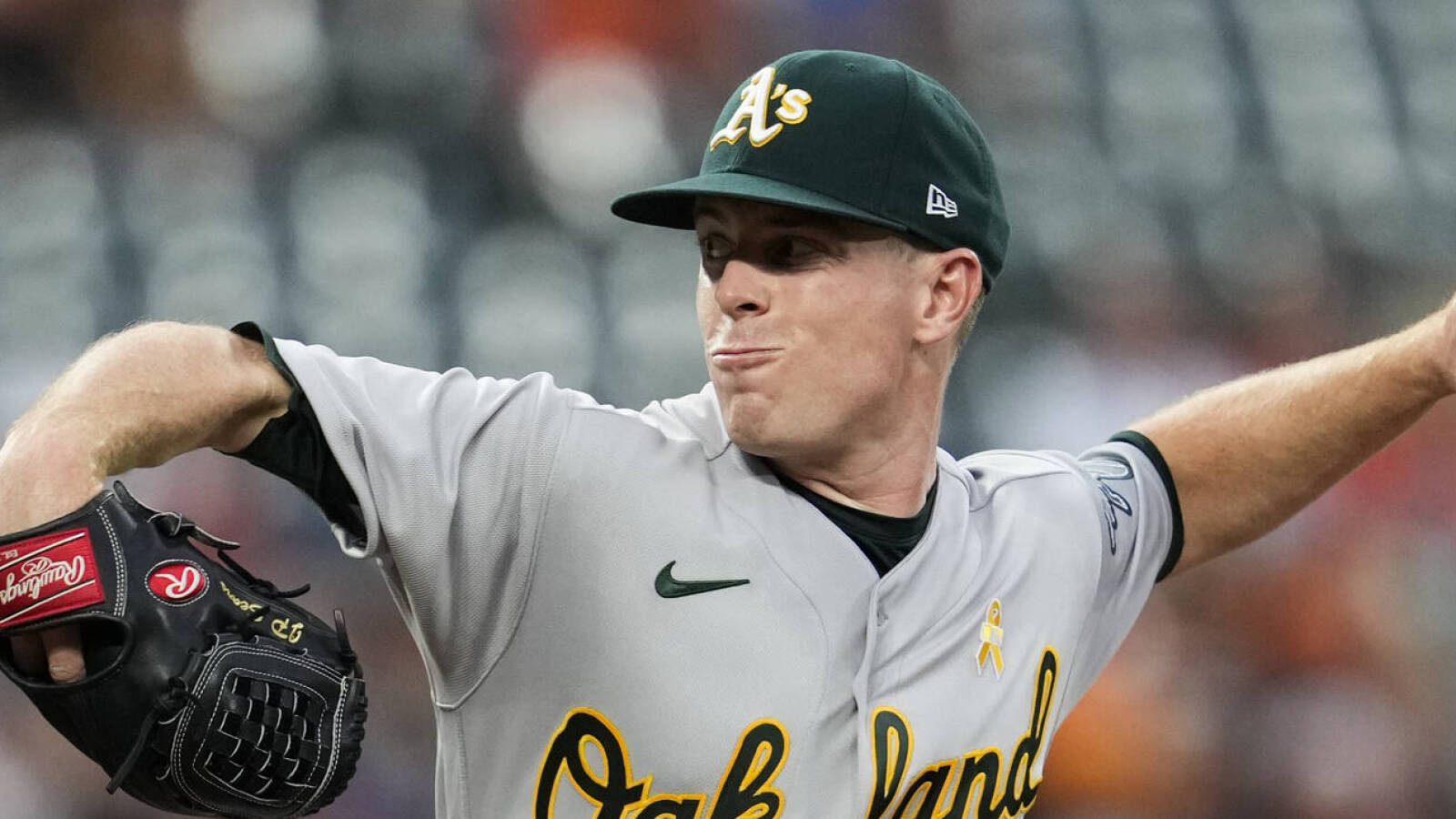
JP Sears, LHP (two option years): Prior to Oakland’s dice rolls on Rucinski and Fujinami, Sears might’ve been a favorite to break camp in the rotation after pitching to a 3.86 ERA in 70 innings as a rookie last year.
Acquired in the Montas trade along with Waldichuk, the 5-foot-11 lefty has dominated Triple-A (2.32 ERA in 101 career innings), but a return to that level might be his most straightforward path to starter’s innings early in the season.
Sears, who’ll turn 27 in a few weeks, isn’t the prototypical “prospect,” as he doesn’t throw especially hard and has relied more on plus command than overpowering stuff to find success in the minors.
It’s a recipe that’s worked well for Oakland pitchers in the past, thanks to the Coliseum’s cavernous dimensions. Even if he doesn’t break camp on the roster, he’ll probably start a fair number of games for the A’s in 2023.
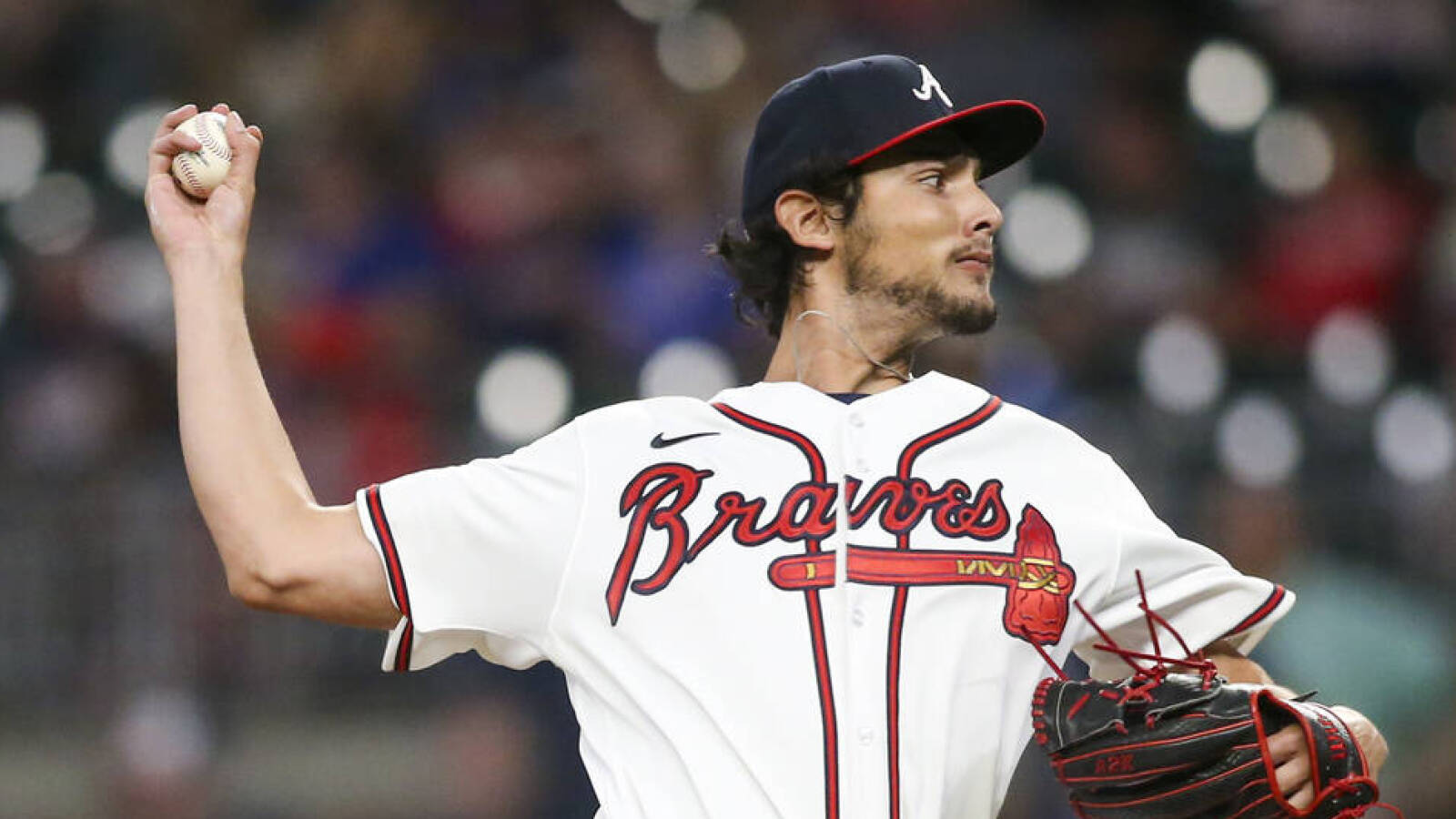
Freddy Tarnok, RHP (two option years): Another piece of Oakland’s return for Murphy, Tarnok has all of 44 2/3 innings above Double-A under his belt (including a tiny two-thirds of an inning MLB debut in 2022).
That lack of upper minors experience, coupled with the breadth of options for the Athletics’ rotation, should probably ticket him for Triple-A work to start the season.
Several scouting reports on the 6-foot-3 Tarnok suggest his ultimate home might be in the bullpen, where a fastball that can already reach 98 mph might play up further.
He’s never reached 110 innings in a professional season, so in addition to getting some needed reps against Triple-A lineups, he’ll also be looking to build out his workload.
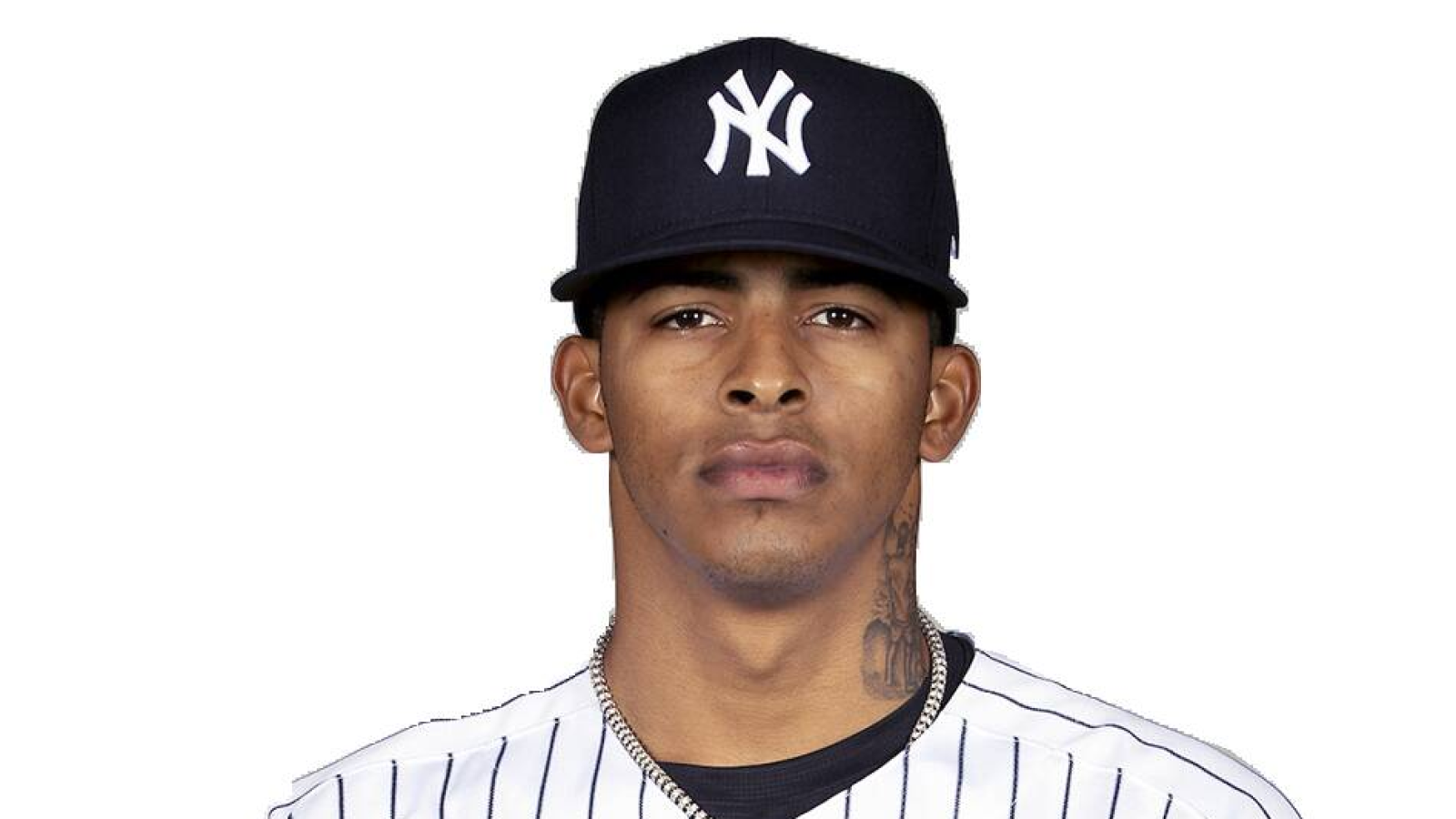
Luis Medina, RHP (one option year): Yet another piece of the Montas return, Medina pitched to a 3.38 ERA in 17 Double-A starts with the Yankees before being blown up for a calamitous 11.76 ERA in seven starts (20 2/3 innings) with the Athletics’ Double-A club.
Command has long been an issue for Medina, but he took that concern to new heights with the A’s, walking 22 of the 114 batters he faced following the trade. FanGraphs lauds Medina’s plus breaking ball and elite arm strength, while Baseball America notes that his heater has reached 103 MPH in the past.
The huge command concerns could lead to a future in the bullpen. Medina isn’t likely to win a starting job early in the season, but the A’s can continue trying to refine his ability to locate the ball in hopes of hitting the jackpot on a starter with this type of repertoire. If not, a move to the ’pen could put him on a fast track to the Majors.
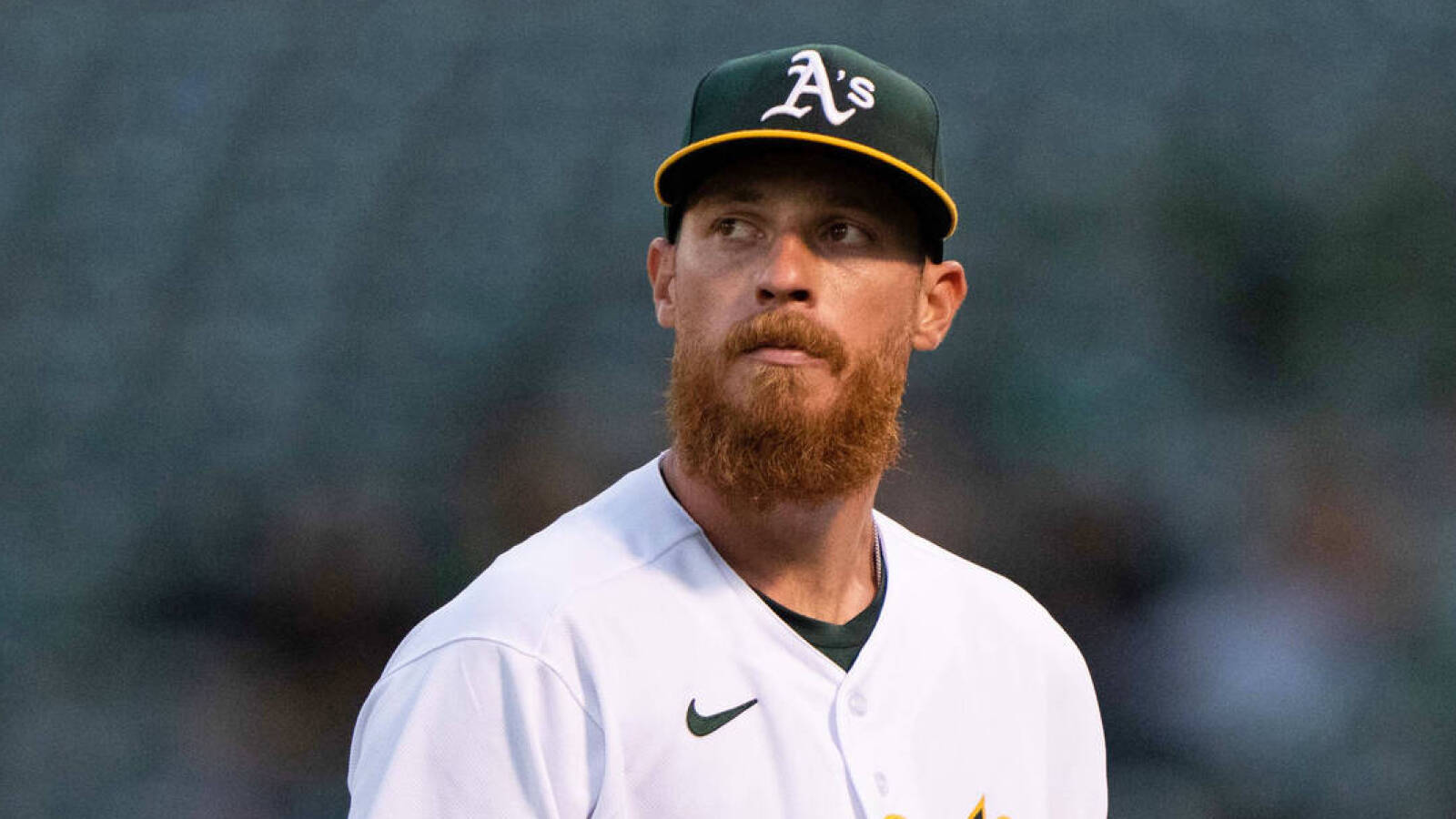
Adam Oller, RHP (two option years): The A’s picked up Oller as one of two arms in the trade sending Chris Bassitt to the Mets.
Nineteen appearances later (14 starts), he has a 6.30 big league ERA under his belt with nearly as many walks (39) as strikeouts (46) in 74 1/3 innings. It wasn’t the start anyone hoped for, but Oller posted a solid 3.69 ERA in seven Triple-A starts.
Oller always profiled as a potential back-of-the-rotation starter, and even the A’s massive home park couldn’t curtail the right-hander’s home run issues (2.06 HR/9).
A bullpen role where he works multiple innings is feasible, as is a return to Triple-A Las Vegas.
Other recent trade acquisitions
J.T. Ginn, RHP: Ginn missed more than three months of the 2022 season with a forearm injury and was clobbered for a 6.11 ERA in 10 starts of Double-A ball when healthy.
He came to the A’s alongside Oller in the Bassitt trade and, as a 2020 second-rounder, was the more highly regarded get for Oakland.
He’s not on the 40-man roster yet and is still only 23, so there’s plenty of time for him to right the ship, but he’s not on the immediate rotation radar.
Ryan Cusick, RHP: The Braves’ top pick in 2021, Cusick was traded to Oakland in the Matt Olson swap. Like Ginn, he spent much of the season on the injured list (in his case, due to a rib fracture).
Also like Ginn, he was hit hard in Double-A when healthy, yielding a 7.02 ERA in 41 frames. He’s not Rule 5-eligible until after the 2024 season, so there’s no rush.
Joey Estes, RHP: Acquired from the Braves alongside Cusick, Estes handled older competition in High-A reasonably well.
His 4.55 ERA wasn’t especially eye-catching, but he whiffed 23.8% of his opponents against a strong 7.8% walk rate in 91 innings.
Home runs were an issue, but that’s two straight years of nice K-BB numbers against older competition for Estes.
Gunnar Hoglund, RHP: Hoglund would’ve been a top-10 pick in 2021 had he not required Tommy John surgery during his junior year of college, but the Blue Jays still liked him enough to take him at No. 19 and the A’s still liked him enough to make him the headliner in the Matt Chapman deal.
Hoglund only pitched eight innings late in the 2022 season as he worked back from that ligament replacement procedure, so he’s nowhere close to the big leagues. His development will be worth keeping an eye on, though.
Lefty Zach Logue, acquired alongside Hoglund, has already been designated for assignment, claimed by the Tigers and then passed through waivers in Detroit.
He surrendered a 6.79 ERA through 57 innings as a rookie last year and actually posted an even grislier 8.12 ERA in 78 2/3 Triple-A frames.
—
Amazingly, even after all of their recent trades of star-caliber players, the organization’s lone entrant on Baseball America’s Top 100 list is catcher Tyler Soderstrom — who, unlike every single one of the names mentioned prior, was drafted by the A’s.
Part of that is borne out of the Athletics’ penchant for prioritizing near-MLB players in trades (as opposed to further off, more highly touted prospects), but it’s still rather surprising to see.
Nevertheless, while the A’s aren’t going to win many games in 2023, they’re brimming with young arms who could eventually hold down spots in the rotation.
Attrition rate among young pitchers is enormous, and many of these names will be lost to injury, shift to the bullpen, or pitch themselves off the roster entirely.
For now, it’ll be fascinating to see how many of Oakland’s young arms can solidify themselves in the big leagues, because their ability to do so (or lack thereof) will be a driving factor in the latest rebuild phase.
More must-reads:
- The greatest postseason moment for every MLB team
- Braves 2B makes speedy recovery from fractured toe
- The '1989 Oakland Athletics' quiz
Breaking News
Customize Your Newsletter
 +
+
Get the latest news and rumors, customized to your favorite sports and teams. Emailed daily. Always free!

